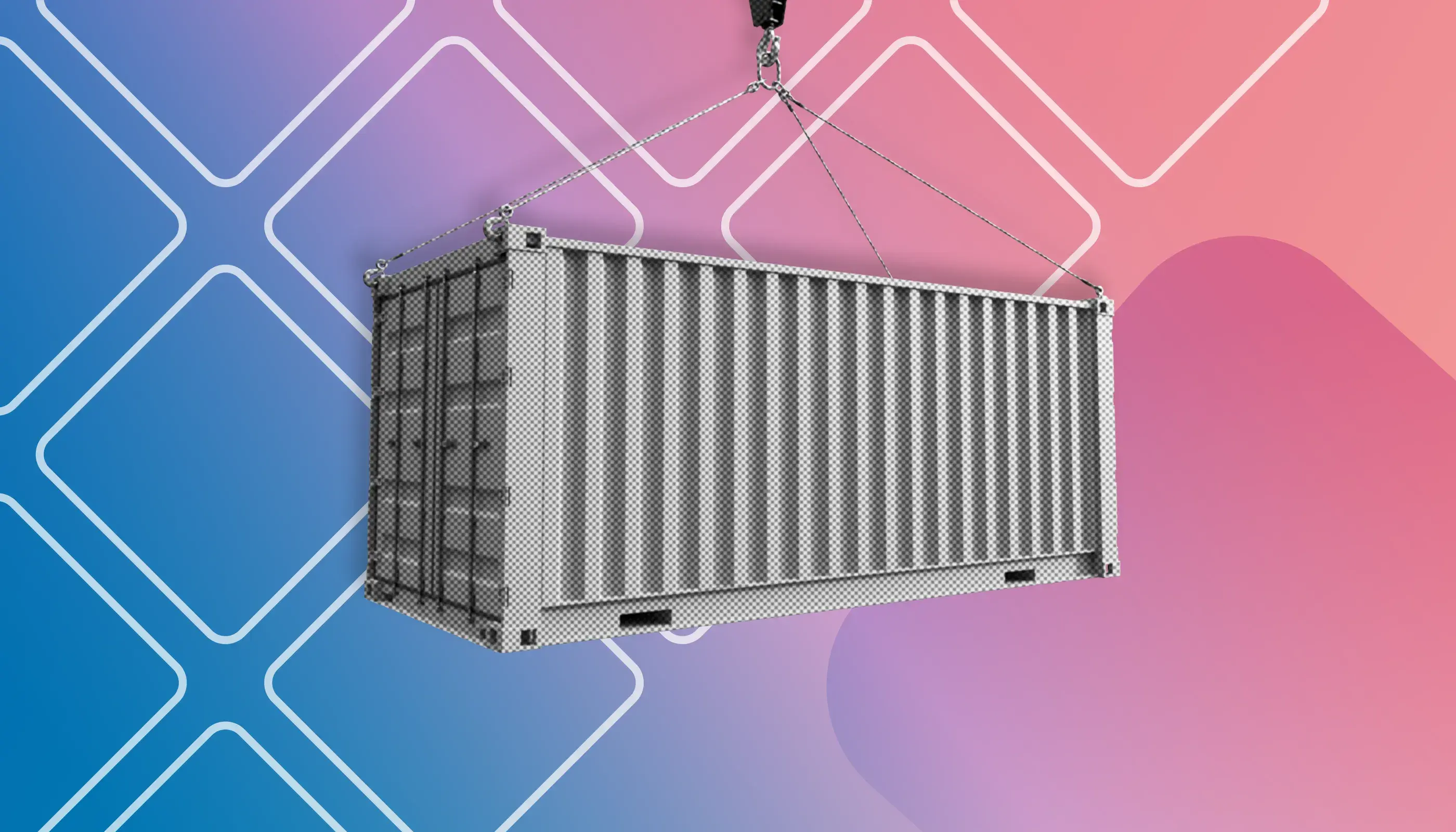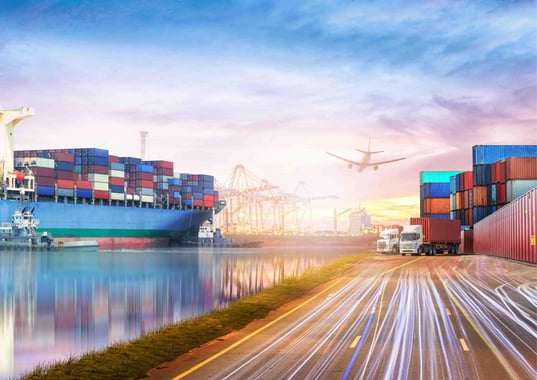The digitalisation of freight transport: challenges and solutions
The digitalisation of road freight transport (RFT) optimises logistics operations and reduces costs. It also strengthens the competitiveness and compliance of companies with regulations. Find out how to modernise your transport management and the right solutions to successfully make this transition.

In a sector as competitive as RFT, getting stuck using traditional methods such as manual document management and limited real-time visibility not only generates high costs but also a loss of competitiveness in the face of increasingly agile competition.
By digitalising your freight transport activity, you automate the majority of your tasks and therefore optimise your logistics chains. Beyond reducing your costs, this improves the quality of your service, while at the same time ensuring you comply with increasingly strict industry regulations. The digitalisation of freight transport is therefore no longer an option but a necessity.
Digitalisation of transport: where to start?
Whether you are a shipper or a carrier, to succeed in your digital transition, it is essential to select the tools adapted to your activity and to fully understand the associated issues.
What software can be used to optimise the management of freight transport?
Today, the digitalisation of freight transport is mainly based on two types of software: transport management systems (TMS) and RFT marketplaces.
TMS (Transport Management Systems) software
Transportation Management Systems (TMS) are essential tools for optimising logistics operations. These software solutions automate every step of your processes, from order receipt to invoicing, which simplifies vehicle fleet management and improves cost accuracy.
With a TMS, companies gain complete visibility into their spending and reduce both delivery times and production costs, leading to better customer satisfaction.
PAmong the most popular advantages of TMS:
- Process Automation: TMS software uses powerful algorithms to plan the most efficient routes, reducing travel times and costs. By integrating real-time traffic and weather data, a TMS enables companies to adapt their plans based on real-world conditions, ensuring fast and reliable delivery.
- Elimination of data entry errors: By directly integrating data from trading partners and internal systems, a TMS significantly reduces human errors. This integration ensures smooth and accurate transmission of information at every stage of the supply chain, improving data reliability.
- Telematics Data Integration: A TMS enables real-time tracking of vehicles, providing instant visibility of shipments. With live updates on the location and status of goods, managers can react quickly to unexpected events and optimise the use of their fleet.
- Cross-system compatibility: A TMS easily integrates with other information systems, such as CRM (Customer Relationship Management) and ERP (Enterprise Resource Planning) solutions, facilitating seamless data management across the entire company. This compatibility strengthens coordination between departments, allowing for more coherent and centralised management.
A TMS can be installed on your company's internal servers or used via the cloud in SaaS mode, to offer you flexibility according to your needs and budget.
→ To learn more about TMS, go to our dedicated article.
RFT marketplaces, new alternatives to freight exchanges
You must be familiar with freight exchanges, the online platforms that connect charterers (shippers) and carriers. They make it possible to optimise trailer filling and routes, thus reducing the number of empty kilometres travelled.
On the one hand, shippers publish freight announcements on these platforms, specifying logistical details, while carriers publish the availability of their vehicles. Both parties can then negotiate and conclude their agreements there.
For years, the freight exchange model was sufficient because it offered centralised visibility on transport supply and demand and reduced the number of empty trips, but today, with the evolution of market needs and the digitalisation of RFT, these traditional platforms show certain limitations that can impact the efficiency and competitiveness of companies, including:
- Limited visibility across the entire market
- Lack of transparency in pricing
- The cost of subscriptions
- Lack of data security
- The Manual Negotiation Process
- The risk of cascading charters
- Limited integration with other management systems
- Outdated user experience
To meet new market requirements, the road transport sector has therefore had to evolve towards more competitive, transparent and efficient solutions.
This is where RFT marketplaces came in
Unlike freight exchanges, RFT marketplaces go beyond simply connecting shippers and carriers.
They offer centralised and comprehensive management of transport operations, including:
- Scheduling and Booking: Process automation for increased efficiency
- Billing: Simplified and transparent management of financial transactions between shippers and carriers
- Reporting and Analytics: Advanced tools for strategic decisions based on reliable data
- Load and Route optimisation: Sophisticated algorithms to maximise route efficiency
- Customer and Partner Relationship Management: Seamless integration with CRM and ERP systems for an optimal user experience
- Technological integration: Compatibility with existing systems (TMS, ERP), for more flexibility
- Enhanced Security: Advanced security measures to protect data and ensure confidentiality of transactions between shippers and carriers
All this while remaining simple to use and offering a much lower cost than traditional freight exchanges.
By combining these two types of software, TMS and marketplaces, you can therefore optimise your operations and reduce your management costs, while improving the quality of your service.
The main advantages of the digitalisation of road freight transport
The digitalisation of RFT is not only a response to recent events that have complicated logistics management (health crisis, driver shortage, new environmental standards, etc.), it is above all a way to optimise your daily organisation by automating as much as possible in order to focus on the essentials.
Digitalisation of road freight transport (RFT) for better market and price visibility
According to a study conducted by Accenture, companies using a digital platform in their supply chain see a 27% return on investment! In addition, McKinsey & Company estimates that a supply chain 4.0 can reduce operational costs by 30% thanks to process optimisation and an overall improvement in efficiency.
By combining Transportation Management Systems (TMS) and RFT Marketplaces, you can profoundly transform your business in the context of the digitalisation of transport:
- Real-time access to transport data: Stay informed about seasonal and economic variations that influence prices and availability to avoid last-minute surprises and improve your planning.
- Anticipation of price fluctuations: By using price forecasts and closely monitoring transport market trends, you can adjust your purchasing strategies in real time and therefore stay ahead of your competitors.
- Optimisation of transport contracts: Using market information, renegotiate your contracts to obtain more advantageous rates. By taking advantage of digital data, you make more profitable decisions.
- Environmentally sustainable decisions: Evaluate the environmental impact of your routes to make more environmentally-friendly decisions (and strengthen your company's reputation for sustainability).
- Increased efficiency through automation: Automate the analyses on key lanes and areas to make fast, accurate decisions. Less time spent processing data, more time to innovate in digitalised transport.
- Geographic expansion facilitated: Identify promising new markets to expand your business and explore new opportunities to grow your transport business internationally.
Digitalisation of transport and data security
The digitalisation of road freight transport (RFT) has profoundly transformed the sector, making it faster and more efficient. However, this development brings new challenges, particularly in terms of data security, as it exposes systems to cyberattacks.
It is therefore crucial for transport companies to protect their data against these growing threats.
The most common cyber attacks in this sector include:
- Ransomware: Malware that encrypts data and demands a ransom to unlock it
- Data Threats: Theft or manipulation of sensitive data
- Malware: Programs designed to infiltrate and damage systems
- Phishing and Spear Phishing: fraud techniques aimed at obtaining confidential information by deception
These threats target computer systems in an attempt to access sensitive information such as customer data, financial transactions and vehicle routes.
To protect yourself effectively, you must therefore choose software that integrates robust security measures, such as data encryption, multi-factor authentication, and continuous system monitoring.
Investing in the security of your data means maintaining the trust of your customers and partners but also strengthening your competitive position in the road transport market while ensuring compliance with current regulations.
For more information on securing data and best practices, check out our article here.
The digitalisation of road freight transport (RFT) is an unavoidable revolution needed to optimise operations, reduce costs and improve service. By integrating tools such as transportation management systems (TMS) and RFT marketplaces, companies can therefore modernise their logistics management and effectively prepare for future challenges.
These solutions offer better visibility, more accurate cost management and greater customer satisfaction, however, they also involve challenges, particularly in terms of data security, requiring robust protection measures.
The complete solution for your digital transformation: Upply
Upply is the 360° platform that’s revolutionizing freight transportation management by harnessing data and technology to drive operational efficiency.
On one side, benchmark and analyze your transport costs by comparing them to market rates with the Smart solution. On the other, connect with shippers, carriers, and freight forwarders on a single platform through Connect, which is also integrated with leading TMS solutions on the market. Integrating these tools into your processes will not only help you tackle today’s challenges but also prepare your business for the future of the industry.
Book a meeting with a Upply expert to discover the solution best suited to your business needs.
Get in touch with a Upply expertArticles that might interest you


Explore the latest market trends with Market Insights
- In-depth studies on freight transport, supply chain and international trade
- White papers and regular reports for constant strategic intelligence
- Analyses by our recognized industry experts


